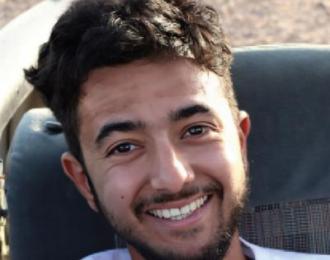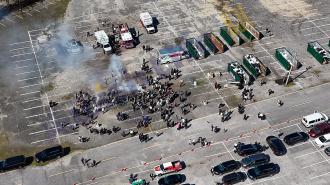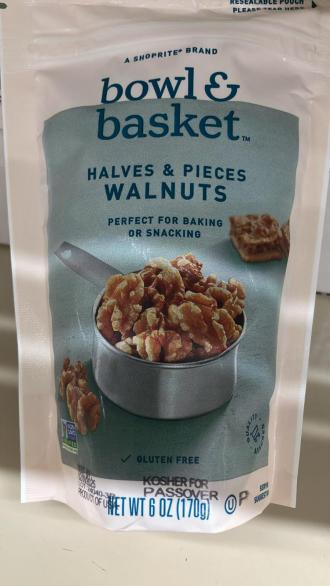Parshas Kedoshim includes the words “Speak to the Entire Congregation of Israel- in Hebrew Adas Bnei Yisroel. A youth organization that existed way down in East Baltimore in the early years of the 20th century to strengthen observance of Shabbos was founded and when they looked for a name, they took the words from that week’s parsha. The times are different, and the challenges are not the same, but, if we look back at the lessons of the past, we can gain guidance for the present. That is what I will try to do in some small way.
Several years ago, I interviewed two couples who were among those youngsters back in the 1930’s and 1940’s. There is, of course, much more to their lives, but I felt that speaking with people who have vivid memories of those times would help us all understand what it meant to be a frum Jew, especially a Shomer Shabbos, in those bygone days.
Matthew Bennett, of blessed memory, was one of the elders of Shomrei Emunah. One day, in a conversation he told me that not only was he at my wedding but that he held a pole of the chupah at the wedding of my wife Feigi’s parents, Chester and Rosalyn Siegel back in 1931. I visited him and asked him to recall those days of his youth. Here are some recollections:
“I was born in Baltimore in 1919. My father learned in the Telshe Yeshiva, Rabbi Gordon was his chavrusa. He was a shochet and also operated a Hebrew School in our home at 2101 East Baltimore Street. He also taught at TA. Among his students were Rabbi Paperman and Rabbi Avigdor Miller and, yibodel l’chaim tovim, Rabbi Poliakoff. Rabbi Chaim Schwartz told me that his father told him that my father was his alef-bais rebbe. He remembers that, once in a while, someone would bring a chicken into the classroom. My father would have to go out and shecht the chicken and then come back and teach the children with bloody fingers!
Sylvia Baker was also born in Baltimore and lived at 19 North Broadway. Her father was first a cap maker and then he bought a gasoline station. They both belonged to the Adas as youngsters. This is how Mr. Bennett describes the Adas. Chester and his older brother Morris, O.D. Taragin and a number of other young people were afraid that Yiddishkeit was dying out in East Baltimore They founded an organization for the young people whose motto was “Judaism in General, Shabbos in Particular”. The week they started it was Parshas Vayakhel. The parsha starts “Vayakhel Moshe Es Kol Adas Bnei Yisroel” and Moshe gathered the entire congregation of the sons of Israel. Therefore, they decided to call their club – “the Adas”. They started a shul and it was called “the boys’ shul” because it was entirely run by the younger generation.
In order to keep the youngsters interested, they had groups. There were the seniors, intermediate, juniors and sub-juniors. I was in the intermediate group, which was for kids around 13 to 16. The groups would meet Shabbos afternoon at a larger shul, the Tzemach Tzedek, which was a Lubavitcher shul headed by Rabbi Axelrod. It was located at Collington and Fairmont Avenues. In the beginning, the groups were not split and boys like Velvel Taragin, (Alan’s father) and Sam Krevitsky, led groups, I think Chester led the Junior group ages 10 to 13.
The kids would come back to the Adas or to various homes on Saturday night (which in Yiddish is Shabbese nacht, no one called it Motzoei Shabbos in those days) for activities. Every Lag B’Omer, we had a hayride. There were about 20 kids in each group, mostly from frum homes but not all. Once a year there was the boat ride to Tolchester. Later, Rabbi Teddy Davis came back from Slabodka and split the co-ed groups, but that was a little later on in the story.
Rosalyn Weinstein, a young girl from Altoona, Pennsylvania, came to Baltimore one summer. Eugene (Pitzy) Siegel’s mother brought her along to a meeting of the Adas and she met Chester Siegel. She spent the summer in Baltimore and Chester courted her by taking her on the Adas Hay Ride and the Tolchester Boat ride. He wanted to marry her then but she decided to return to Altoona and finish her senior year of high school first. I remember that they got married outside in front of the Adas and the Intermediate boys were the ones who held up the chupah and I was one of those boys.
At this point, it is important to clarify that there were no Bais Yaakovs in the United States and very few boy’s schools either. The Talmudical Academy only went to the 6th grade in my youth. Those boys who wanted to learn more would have a class with Rabbi Samson after public school. But, it was a different world. Only a few youngsters were shomer Shabbos and it was hard to find employment. The Adas helped people get jobs, which were the main goal, to keep the young people shomer Shabbos. Keep in mind that these were the years of the Great Depression. The Adas was unique.
As time went by, more and more of the original Adas activists joined the move uptown. Chester and Rosalyn remained in East Baltimore and they were the main ones keeping the Adas going in those years. One reason that they were able to devote so much time to the Adas was that they had no children. They were married in 1931 and did not have a child until after Chester came back from the Army after World War II. The birth of Feigi was some simcha. The whole orthodox community was so happy for them,” said Matt Benett.
Despair, describes the sense of helplessness felt by many frum Jews, at the beginning of the 20th century here in Baltimore. For many, there was a sense of y’ush, despair. Could anything be done to inspire young American boys and girls to be shomer Shabbos?
The young boys and girls who formed the Adas way back in the 1920’s were not content to cry. They were sufficiently bothered by the situation to do something.
The early Adas was called “The Boys’ Shul”. It was led by the youth themselves. It was spontaneous and self-motivated by the members themselves.
What is a Kanai? I am sure the youngsters of the Adas were called fanatics by those who thought that they were too strict. Rabbi Dovid Katz suggested to me that a better translation for kanai is “passionate”.
I want to share with you the recollections of an Adas Girl from those years, Ann Cohen, of blessed memory. Here are her own words. “The Adas was the love of my life. We spent hours at the Adas. One day, when my father was still alive, I came into the house and heard him talking to my mother about moving up town. I started to cry, I told them that I only would move if we moved next door to the Adas. When I was 10 years old I started Hebrew School at the Adas. We learned five pesukim at a time and, for homework, we had to be able to read and translate into Yiddish those five verses. Rabbi Davis’s wife was our teacher. On Shabbos we would learn Pirkei Avos. We went in the morning and then returned for Mincha.
I remember how one day, Rabbi Davis, drew a tree on the board and said that some mitzvahs are higher than others and that we had to separate the boys and the girls from then on. This is a later period than that of Matis and Sylvia Bennett, when the shul had a rabbi, who guided them in Halacha. Not everyone went along with it and there were some mothers who pulled out their girls, but I stayed. Rebbetzin Davis was a major influence on my life. Everything she taught me has stayed in my mind.
Rosalyn Siegel was a beautiful woman. She had honey blond hair pulled back in a bun. She and Chester made a beautiful pair. They were the glue that held the Adas together.
We used to come back to the Adas on “Shabbese nacht” and play on the sidewalk outside, games like hide and seek. You could stay outside until midnight and not be afraid. Rosalyn Siegel was our advisor and our role model. She was very beautiful and I think that makes an impression on a young girl. Morris Cohen added at this point that Chester and Rosalyn were the “Pnei” of the Adas. Translating that phrase is not too easy. Literally, it means that they were the “face” of the Adas, when you think of the Adas in those days, you think of them.
Ann remembers that once there was a Melave Malka and Rosalyn assigned her to memorize and recite in Yiddish a story about why the dog chases the cat and why the cat chases the mouse. All the parents came and she was very proud to be able to recite it in Yiddish. When I told this over to Feigi, she said that she remembers that her mother had that book in the basement. Unfortunately, I don’t think we saved it for posterity, Ann says, we were lucky, we were a small clique of Shomrei Shabbos.
A few concluding comments. It would be a travesty to re-write this history to make it conform to the norms of 21st century orthodoxy. These boys and girls were the few among the many, the ones who did not submit. The world they grew up in was far different than the one their great grandchildren have the zechus to live in today. They fought for basic Yiddishkeit, for Shabbos and kashrus. They did not battle gentiles, but other Jews who laughed at them and called them foolish for persisting in the old ways.
The challenges we face today are not identical to those Ann Cohen faced. Ann remembers that she and another frum girl wanted to be excused from class when they were singing Christmas Carols but the teacher would not let them leave. She said that she sat in the back and I silently translated the songs into Yiddish to while away the time, “Shtile nacht, heilige nacht”.
Perhaps the greatest challenge we face today is keeping our children on the derech. The passing on of our traditions to the next generation and motivating them to live by the ideals of their ancestors.
Now that we live in a thriving Torah community, let us recall those idealistic boys and girls who swam against the tide. There are literally thousands of frum Jews today descended from them and many of our communal institutions were started and supported by these special people. May their memory be a blessing.

















